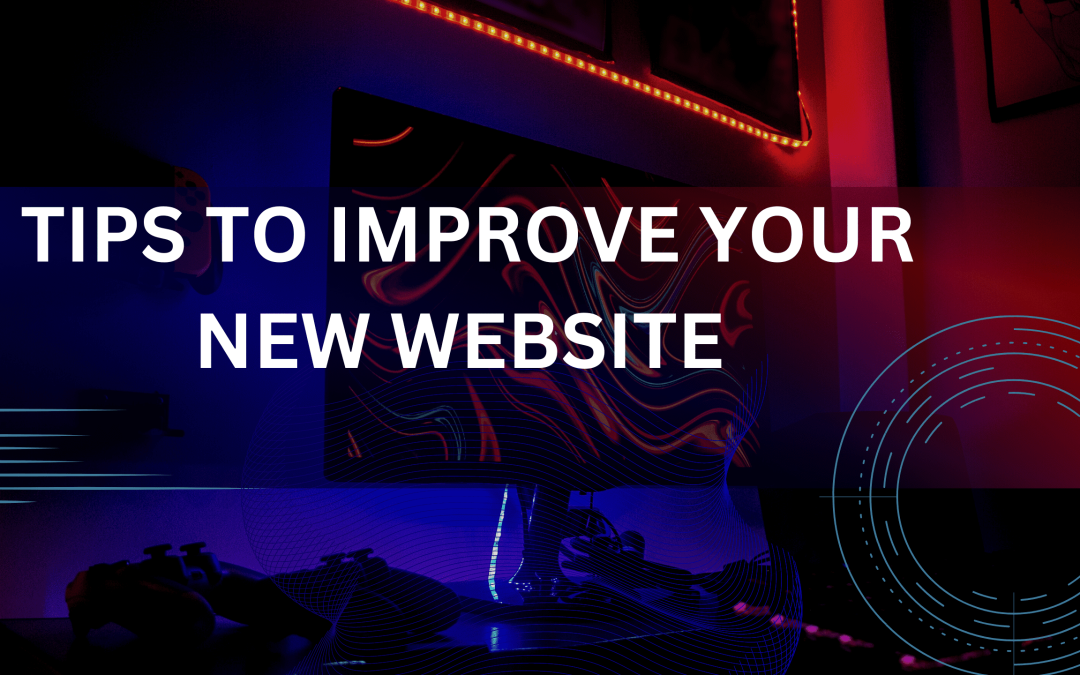In today’s digital age, having a strong online presence is crucial for the success of any business. However, new websites often face challenges in standing out amidst the vast sea of online content. This article will provide you with practical tips to enhance your new site’s visibility and effectiveness.
I. Introduction
A. Importance of a Strong Online Presence
In the competitive digital landscape, establishing a robust online presence is vital for attracting and retaining customers. A strong online presence not only increases visibility but also builds credibility and trust among users.
B. Challenges Faced by New Websites
New websites encounter various challenges, including low visibility, limited traffic, and fierce competition. Overcoming these hurdles requires a strategic approach that incorporates effective SEO techniques and a focus on user experience.
II. SEO Basics
A. Understanding Search Engine Algorithms
To improve your site’s visibility, it’s crucial to understand how search engines operate. Familiarize yourself with search engine algorithms and the factors that influence rankings.
B. Keyword Research and Integration
Conduct thorough keyword research to identify relevant terms for your niche. Integrate these keywords naturally into your content, titles, and meta descriptions to enhance search engine visibility.
C. On-Page SEO Techniques
Optimize your website’s on-page elements, including meta tags, headers, and images. Ensure that your content is well-structured and easy to read for both users and search engines.
D. Importance of Quality Content
Craft high-quality, informative, and engaging content. Search engines prioritize valuable content, and users are more likely to stay on your site if they find the information they seek.
III. Website Design and User Experience
A. Mobile-Friendly Design
With the majority of internet users accessing websites on mobile devices, ensure your site is mobile-friendly. Responsive design improves user experience and positively impacts search engine rankings.
B. Page Loading Speed
Optimize your website’s loading speed to prevent users from bouncing off due to slow loading times. Compress images, minimize code, and utilize browser caching for faster performance.
C. Navigation and User-Friendly Layout
Create an intuitive and user-friendly website layout. Easy navigation enhances the user experience, encouraging visitors to explore more pages on your site.
IV. Social Media Integration
A. Leveraging Social Platforms
Utilize social media platforms to promote your content and engage with your audience. Share updates, respond to comments, and use social media as a tool to drive traffic to your website.
B. Building a Social Media Strategy
Develop a comprehensive social media strategy that aligns with your brand and business goals. Consistent and strategic social media activity can significantly boost your site’s visibility.
V. Link Building Strategies
A. Internal Linking
Implement internal linking to connect relevant pages within your website. Internal links contribute to better navigation and distribute authority throughout your site.
B. Backlink Building and Outreach
Build quality backlinks from reputable websites in your industry. Engage in outreach to establish connections and secure opportunities for guest posting and collaborations.
VI. Analytics and Monitoring
A. Setting Up Google Analytics
Install Google Analytics to track and analyze your website’s performance. Monitor key metrics, such as traffic sources, user behaviour, and conversion rates, to make informed decisions.
B. Regular Monitoring and Adjustments
Continuously monitor your site’s performance and make adjustments based on analytics data. Stay proactive in identifying and resolving issues to ensure optimal website health.
VII. Content Marketing
A. Creating Engaging and Shareable Content
Develop content that resonates with your target audience. Craft shareable content that encourages users to distribute it across social media, increasing your site’s reach.
B. Utilizing Blogs and Articles
Maintain a blog or article section on your website. Regularly publish relevant and valuable content that not only attracts visitors but also establishes your authority in your industry.
VIII. Community Engagement
A. Building an Online Community
Foster a sense of community around your brand. Encourage user interaction through comments, forums, or social media groups, creating a loyal customer base.
B. Responding to User Feedback
Actively engage with user feedback and comments. Addressing user concerns and responding to feedback positively enhances your brand’s reputation and customer satisfaction.
IX. Continuous Improvement
A. A/B Testing
Conduct A/B testing to refine your website elements and marketing strategies. Test different headlines, layouts, and calls to action to identify what resonates best with your audience.
B. Staying Updated with SEO Trends
Stay informed about the latest SEO trends and updates. Search engines continually evolve, and staying ahead of the curve ensures your site remains optimized for maximum visibility.
X. Conclusion
Incorporating these tips into your new site strategy will significantly improve its visibility, user experience, and overall success. Remember that the digital landscape is dynamic, so stay adaptable and continuously refine your approach to meet the evolving needs of your audience.
Frequently Asked Questions (FAQs)
- Q: How long does it take to see results from SEO efforts?
SEO results can vary, but noticeable improvements may take a few months. Consistent efforts over time yield more sustainable results.
- Q: Can I do SEO on my own, or should I hire a professional?
While some basic SEO tasks can be done independently, hiring a professional ensures a comprehensive and strategic approach for optimal results.
- Q: What role does content play in SEO?
High-quality and relevant content is a crucial aspect of SEO. It helps attract and retain visitors while improving search engine rankings.
- Q: How often should I update my website for SEO purposes?
Regular updates, including fresh content and periodic optimization, contribute to maintaining a healthy and effective website.
- Q: Is social media important for SEO?
Yes, social media activity can positively impact SEO by driving traffic, increasing brand visibility, and generating backlinks.

